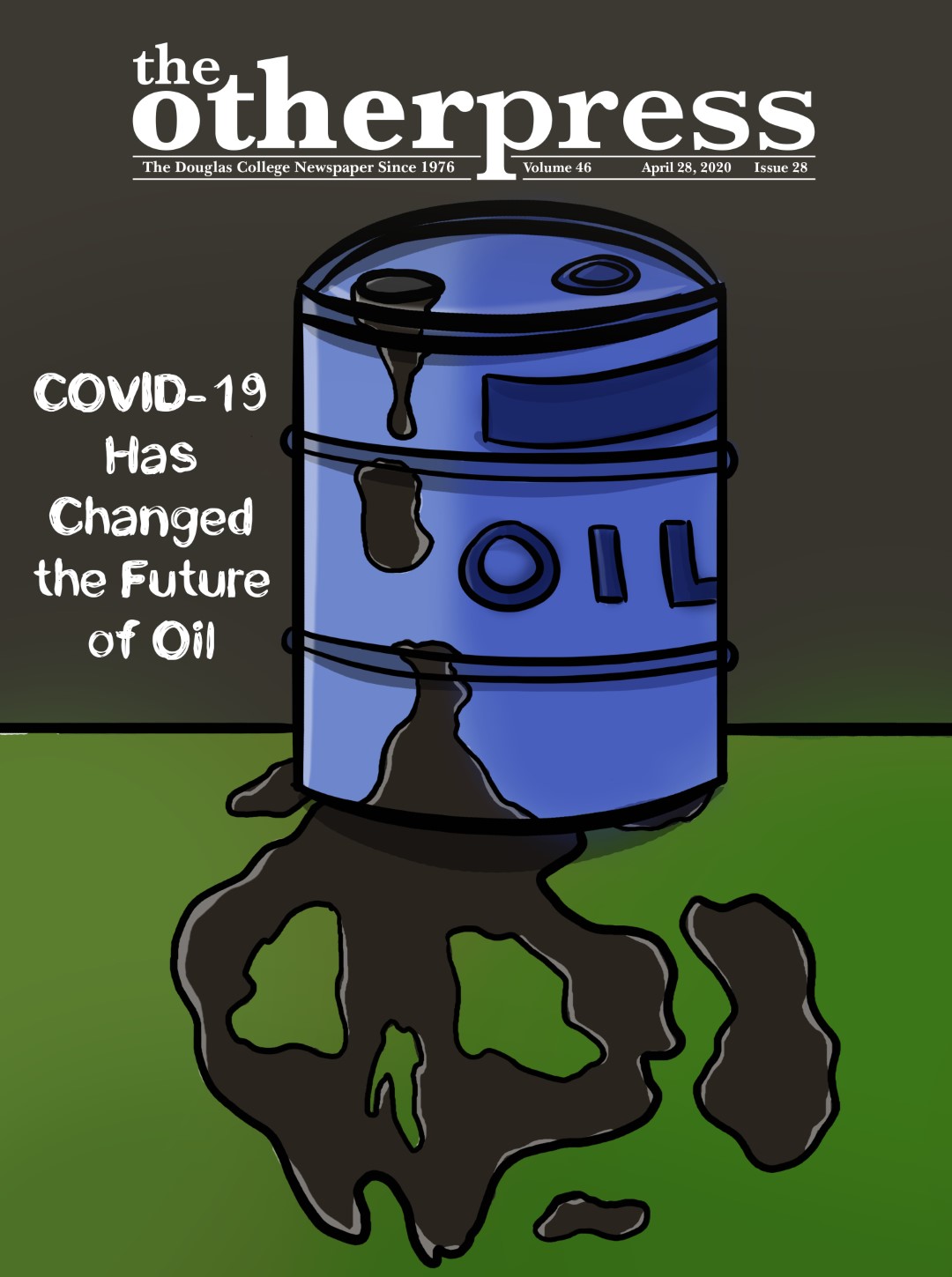
COVID-19 causes oil prices to go into historic negatives—what does this mean for Canada?
By Jessica Berget, Editor-in-Chief
As closing businesses and struggling industries become yet another symptom of COVID-19, one industry has recently taken a major hit during this epidemic: big oil.
What happened?
Once a rich and resourceful energy commodity, crude oil had become worthless for a moment. Less than worthless.
On April 20, as a result of the economic slowdown due to the coronavirus epidemic, a price war between two important oil tycoons Russia and Saudi Arabia, and the prospect of a economic recession—oil prices are in the negative. West Texas Intermediate (WTI) crude oil costs have gone down to below zero in a historical first reaching up to nearly negative $40 for a 42-gallon barrel (-$37.63 to be exact).
In short, this is because the supply of oil is overwhelming the demand. This happened largely because of how oil is commonly purchased by “futures contracts”— meaning it is a delayed purchase. Oil contracts are sold monthly. Because of the current epidemic, no one is travelling or using transportation, therefore no one wants to store the oil since they cannot sell it. Many contract holders sold their May contracts to avoid having to find a place to store oil. Some companies and contract holders are paying people to take it off of their hands like a game of “hot potato,” hence the negative price drop.
While May’s contract is in the negatives, some are optimistic that the price of oil will rise again in the coming months. For now, however, oil companies are having to halt oil production and possibly even destroy the product to get by. Earlier this month in fact, CNBC reported that the Organization of the Petroleum Exporting Countries (OPEC) and its allies along with pressure from the US government agreed to cut down on oil production by 10 million barrels a day—which equates to about 10 percent of global production. While that may have curbed the price from going even lower, there is still too much oil right now. Onshore oil storage worldwide is now roughly at 85 percent, as reported by the World Economic Forum (WEF). North American tanks are also nearly full to their max, as reported by CBC.
In the past week oil prices have improved considerably, with WTI oil prices now at about $17 a barrel, and June’s contract changing to nearly $12 a barrel, but just last year the price was $60 a barrel. We still have a way to go if we want to see oil prices come back.
What will happen to Canada?
Oil remains a vital resource for Canada’s economy and daily life. We are both the fourth largest producer and exporter of oil globally, according to Natural Resources Canada. Oil is used not just for jet fuel, but also to use as an energy source, to heat our homes, and make a wide variety of products in cosmetics, sporting goods, electronics, plastics, textiles, asphalt—and even solar panels! According to the Canadian Association of Petroleum Producers (CAPP), Canada uses about 1.5 million barrels or oil a day—in other words, 2.5 percent of global consumption. With prices going into the negatives with no clear answer if it will improve, some hope that this will be the time Canada and many other countries opt for more renewable and cleaner energy sources.
One good thing has come from this historic price drop. Cheap gas! On April 27, CBC reports that gas prices in Metro Vancouver hit less than $0.80 per litre for regular gas. Analysts say this price will stay low as oil industries struggle and some speculate that oil prices may never come back from this. Spending less on gasoline may sound great to some people, but it’s not without consequences. Canadian provinces that rely on revenue from oil such as Alberta, Newfoundland, Saskatchewan, and Labrador will take a huge blow from this, and so in turn will the Canadian economy. For now, the price of Canadian oil from Western Canadian Select (WCS) sits at $1.54 as of last Friday, much better than it was on April 21 at -$3.83, and the -$40 of WTI, but that does not mean we won’t be strongly impacted by this historic event.

Some experts, according to CBC, say Canada’s oil production could fall by one million barrels a day. According to Huffington Post, TD Bank has said that Alberta will see the biggest hit of unemployment of any province, averaging about 12 percent—double what it was last year—as most of their jobs revolve around the oil industry. The Royal Bank of Canada (RBC) also predicts a major economic recession for every province in Canada as a result of the oil price drop.
What is the future of Canada’s oil industry?
The consensus on whether this will negatively impact the future of the oil industry is so far undetermined. Some say this spells disaster for oil energy companies while the negative cost will make people go for more greener and environmentally friendly sources. Currently, Canada’s oil sands industry could face being sidelined as lower cost oil production may take the economic edge and supply oil for cheaper. Environmentalists are saying “no more” to bail outs for Canada’s oil and gas industries. Others say that the demand for oil will still go up despite this hiccup. A CNBC article from February says that oil demand will peak by 2040 or sooner, and indeed many leading oil companies expect oil demand to peak in the next decade. Some are less hopeful.
According to CBC, Massachusetts economist Philip Verleger has studied the oil industry since the ‘70s and calls for Canada to transition away from oil, citing the changes COVID-19 has made to transportation. He also says Canada faces big competition in this industry as their oil reserves are hard to sell since they are more expensive to move and process compared to other’s reserves of oil. “The Stone Age didn’t end because of a lack of stones,” he said. “The oil age is not going to end because of a lack of oil. We are going to leave a lot of oil in the ground.” The need for transportation and petrochemicals such as natural gas makes up more than half of total oil consumption, and since all those things currently are in low demand, things aren’t looking good for our old friend big oil. As it stands, the future of the oil industry is dependent on the response to this historic price drop.


